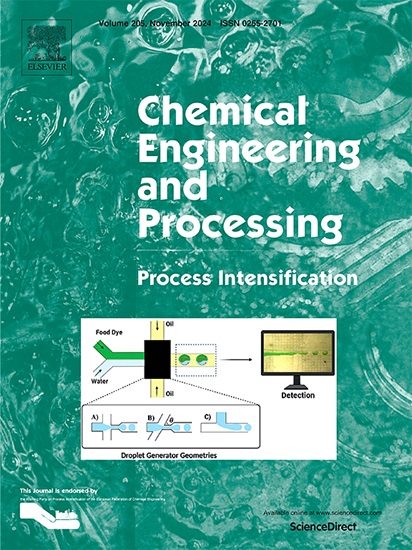Enhancing electrocatalytic performance for SnO2-Sb, Ni coatings induced by high-resistance layer and surface active layer in combination with alternating thick/thin layer method
IF 3.8
3区 工程技术
Q3 ENERGY & FUELS
Chemical Engineering and Processing - Process Intensification
Pub Date : 2025-04-08
DOI:10.1016/j.cep.2025.110313
引用次数: 0
Abstract
Developing an electrochemical degradation system with high catalytic efficiency and extended operational lifetime is crucial for practical industrial applications. In this study, a novel Sb, Ni-doped tin oxide-coated electrode, named A@SnO2-Sb-Ni/SnO2-Sb/Ti, featuring a high-resistance intermediate layer (HRIL) and surface active layer in combination with alternating thick and thin layers (ATTL) method was proposed to enhance both catalytic performance and stability. The potential divider effect of the SnO2-Sb HRIL and fine cracks on the surface induced by alternating thick and thin active layer not only effectively reduce the dissolution rate of the active layer but also inhibit the direct dissipation of the Ti substrate by the electrolyte, which collaboratively increases the overall stability of the electrode. Accelerated life test results demonstrated that the stability of the A@SnO2-Sb-Ni/SnO2-Sb/Ti electrode showed a 110 % improvement in acidic environments compared to the traditional SnO2-Sb-Ni/Ti electrode. At a constant current density of 10 mA cm−2 applied to a 4.0 cm2 electrode, nearly complete degradation of Rhodamine B (100 mL, 20 mg L−1) was achieved within 15 min.

高阻层和表面活性层结合厚/薄交替法对SnO2-Sb、Ni镀层电催化性能的提高
开发一种具有高催化效率和长使用寿命的电化学降解系统对实际工业应用至关重要。在本研究中,提出了一种新型的Sb, ni掺杂锡氧化物包覆电极,命名为A@SnO2-Sb-Ni/SnO2-Sb/Ti,具有高电阻中间层(HRIL)和表面活性层,结合厚薄交替层(ATTL)方法,以提高催化性能和稳定性。SnO2-Sb HRIL的电位分划效应和厚薄有源层交替产生的表面细裂纹不仅有效降低了有源层的溶解速率,而且抑制了电解质对Ti衬底的直接耗散,共同提高了电极的整体稳定性。加速寿命测试结果表明,A@SnO2-Sb-Ni/SnO2-Sb/Ti电极在酸性环境中的稳定性比传统的SnO2-Sb- ni /Ti电极提高了110%。在4.0 cm2的电极上施加10 mA cm−2的恒定电流密度,罗丹明B (100 mL, 20 mg L−1)在15分钟内几乎完全降解。
本文章由计算机程序翻译,如有差异,请以英文原文为准。
求助全文
约1分钟内获得全文
求助全文
来源期刊
CiteScore
7.80
自引率
9.30%
发文量
408
审稿时长
49 days
期刊介绍:
Chemical Engineering and Processing: Process Intensification is intended for practicing researchers in industry and academia, working in the field of Process Engineering and related to the subject of Process Intensification.Articles published in the Journal demonstrate how novel discoveries, developments and theories in the field of Process Engineering and in particular Process Intensification may be used for analysis and design of innovative equipment and processing methods with substantially improved sustainability, efficiency and environmental performance.

 求助内容:
求助内容: 应助结果提醒方式:
应助结果提醒方式:


